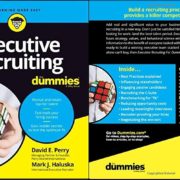Understanding Digital Distraction and Its Harmfulness
The fear of digital distractions ruining professional and personal lives has become global. This problem is as real as any these days. Just think about the hundreds of times people touch or check their phones on a daily basis, how people panic when they temporarily misplace their device, the weird sensation of the “phantom vibration syndrome” and how just by seeing a message alert can be even more distracting than the message itself.
These types of behaviours can have real-life consequences. For instance, some people may be offended if someone all of a sudden stops talking to them in order to answer a text. Even taking a moment to answer a message can hinder your thinking process and prevent you from deep thinking on the task you had at hand.
In all fairness, this is just one side of the story. It must be stated that emerging technologies nowadays keep humans connected on a level never seen before. But this tells only part of the story.
Workplace productivity has been one of the main issues for HR professionals since the beginning of organised labour. Every organisation seeks to maximise its return on labour whilst also minimising wasted time. Advances in the field of technology have helped that ‘quest’ in many ways, but they have also complicated an underlying and very old problem. Emails and applications such as Slack allow employees from various parts of the country or even the world to get answers, solve problems and collaborate in real-time. Nonetheless, given our ‘always online’ culture, communication technologies have stopped being helpful, but rather more of an impediment.
In a recent study, it has been revealed that 84% of email users keep their inbox open at all times, with 70% of these emails being opened within 6 seconds of being received.
Given peoples’ proficiency at responding to emails and messages, most of them have sacrificed their most important ability: doing their job properly. Much of what people do requires deep focus and time to think. Having the email open all the time and answering to them as quickly as possible steals focus. Even more worryingly, is that some employees may become frustrated with the work they actually get to accomplish in one day. But just how bad are emails and other communication technologies?
In order to discover the answer to this question, anonymous data has been collected from over 50,000 white-collar workers and the results were flabbergasting. The majority of them were struggling with the distractions and interruptions that took place in the workplace. It is clear that people all around the world are having difficulties keeping up with the pace at which things are happening.
Recently, a company in New Zealand decided to try a productivity experiment and had switched to a 4-day, 32-hour workweek. According to the company at-hand, “workers said the change motivated them to find ways of increasing their productivity while in the office. Meetings were reduced from two hours to 30 minutes, and employees created signals for their colleagues that they needed time to work without distraction.”
The New Zealand study brings to light very important lessons that numerous organisations can apply worldwide with or without the 4-day workweek. If companies create the right environment for employees to focus without distractions, productivity levels rise.
Many experts in the field of productivity have suggested batching communications into specific blocks during the day, while others have suggested committing to at least an hour of focused work without emails and phones.
White-collar workers such as writers, designers, developers, and project managers, unfortunately, depend on collaboration, quick communication and access to information in order to meet the demands of their roles and deadlines.
Communication tools facilitate getting the information needed, but they are also a constant source of interruption to our focused work. When we looked at the data, we found that the average white-collar employee “checks in” with communication tools every 6 minutes.
How can we expect workers to accomplish focused work when they only have a few minutes in between answering e-mails and messages? The short answer is that we cannot.
As we look at the full breakdown, the picture is even bleaker. Thirty-five percent of workers check their emails and messages every 3 minutes or less, while only 18% can go more than 20 minutes without being reeled into a ‘digital conversation’.
Even more worrisome, it has been discovered that people who use Slack—a popular team chat tool meant to reduce e-mail use—actually switched to communication tools more often. Rather than streamlining their communication time, Slack users on average spent only 5 minutes in between messaging check-ins, while non-Slack users could go 8 minutes.
The technology that we use to improve work is hurting our ability to get work done. The constant communication interruptions are not only diminishing productivity but also hindering workers from doing their best work and growing in their careers.
Data gathered shows that 40% of white-collar employees never get 30 minutes straight of focused time in a workday, which means that nearly half of them rarely get time for deep work and concentration. In fact, the study revealed that the average white-collar taps out at around 40 minutes of focused time free from any sort of communication. In other words, 40 minutes was the longest stretch of time most people could afford going without checking their emails or phones. A willingness to change and better time management should put anyone of the right path to avoid any digital distraction.
There is a real value in providing companies with the tools to carry out regular organisational assessments and this is where Great People Inside comes to your aid. Our online platform offers the best solutions and tools for your company to thrive in every type of industry and any possible situation your organisation may find itself. In terms of lowering your employee turnover rates, we recommend our GR8 Full Spectrum assessment for hiring and 360° Survey for retention. Finding the right talent, the best fit for the job and your organisation can be a very challenging task. It requires deep knowledge of your own organisation’s culture and a keen understanding of the candidate’s personality, strengths, interests, work style and other characteristics. Our technology and solutions will do the work for you, helping you find employees who can flourish and reach the highest performance required to constantly bring your company forward.
Request a free demo:
Sources:
https://hrdailyadvisor.blr.com/2018/08/07/truth-digital-distraction-workplace/
https://www.fastcompany.com/90437023/is-digital-distraction-as-bad-as-you-think-it-is
https://www.inc.com/shama-hyder/how-digital-distraction-is-killing-creativity-what-to-do-about-it.html












